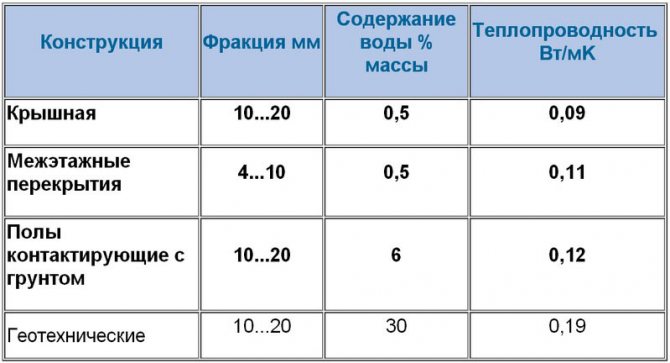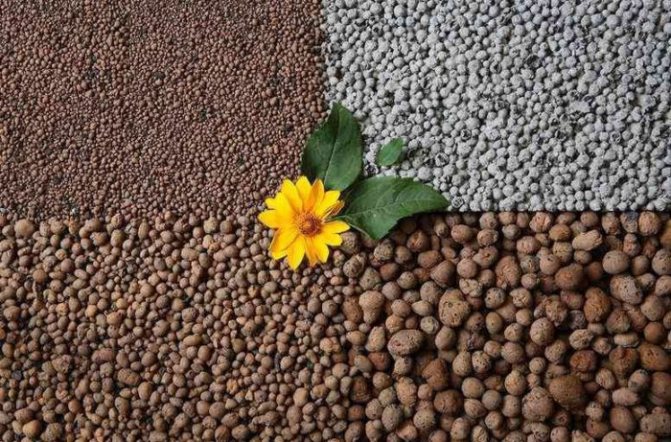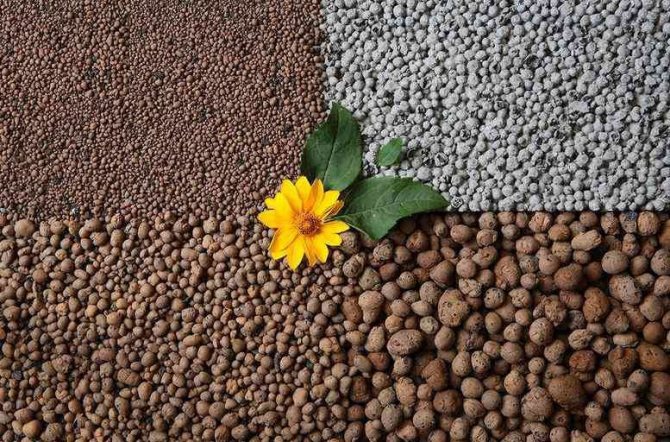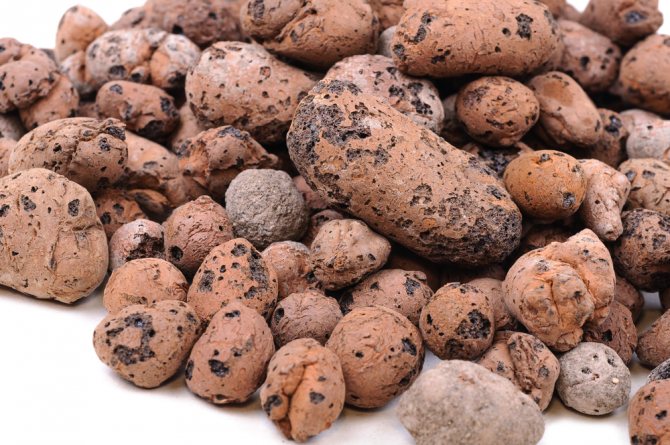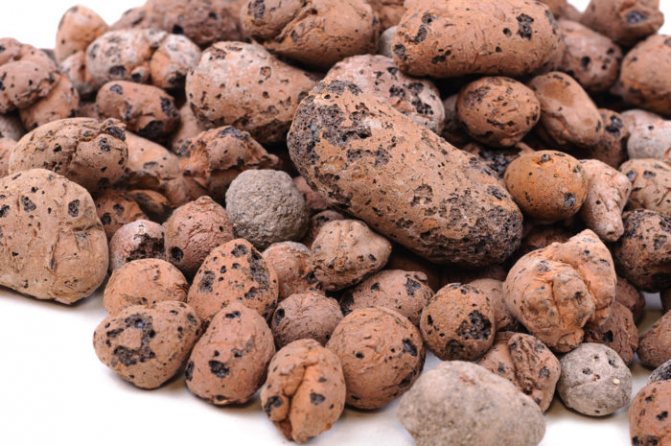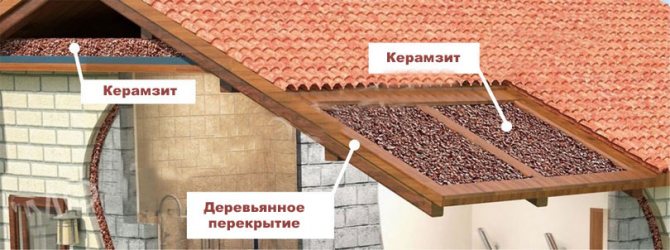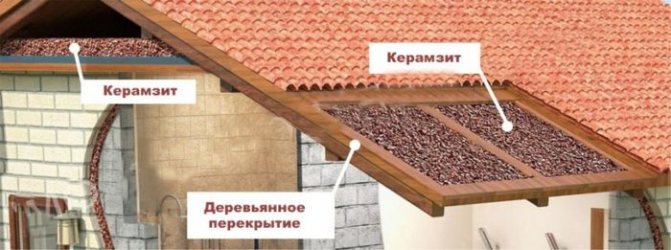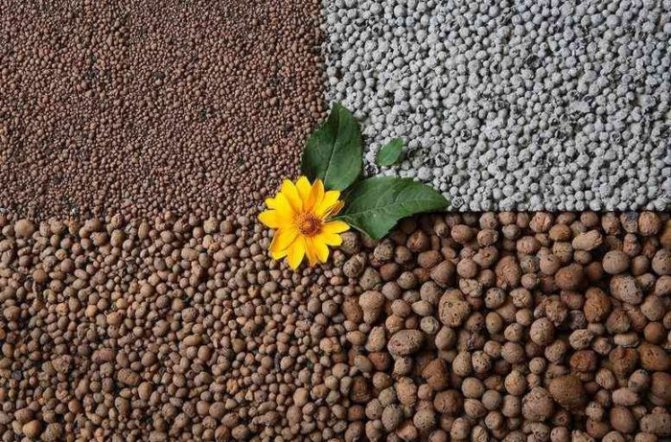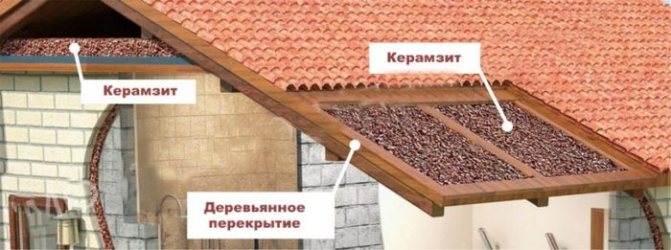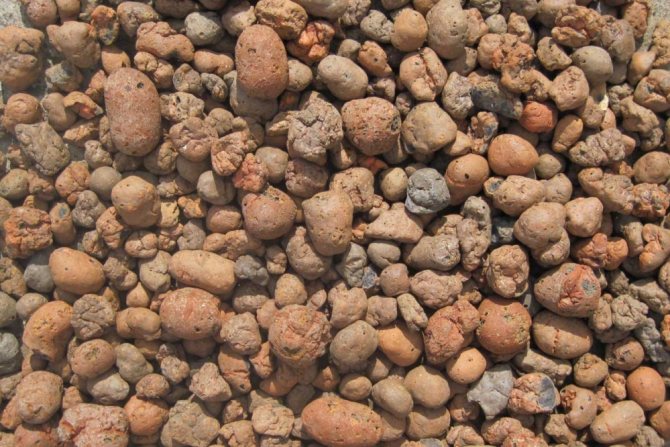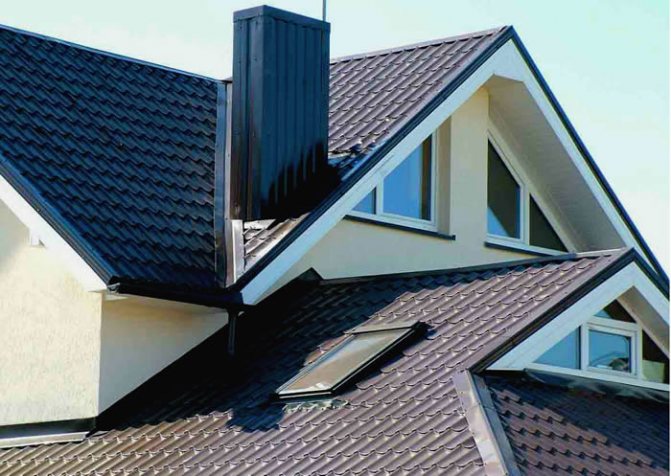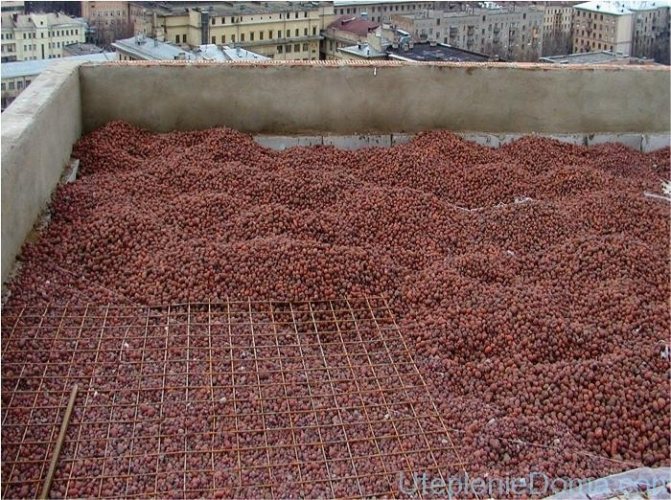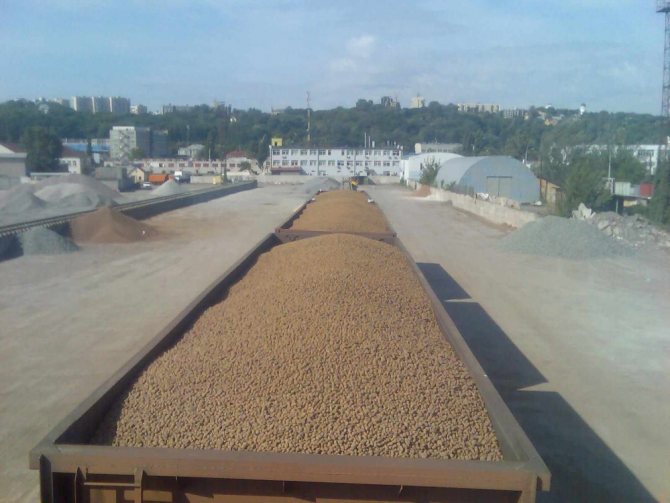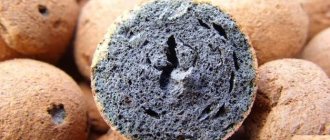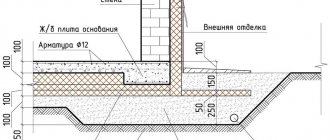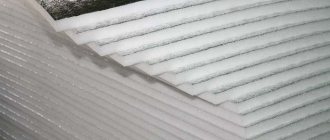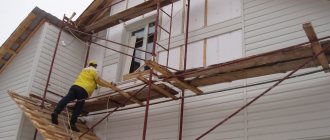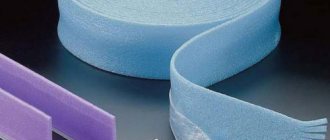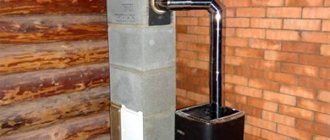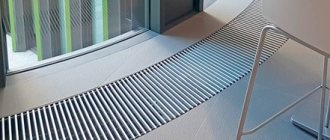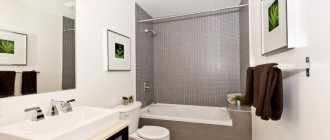The roof is one of the elements of the building envelope. Its main function is to provide a heat-insulating barrier space that protects the interior of the building from harmful atmospheric influences (rain, snow, wind, hail, etc.). Heat loss in a building with an uninsulated roof is about 15-30%.
Therefore, properly equipped roof insulation will significantly save on heating.
More than half a century of experience in insulating roof structures with expanded clay has shown that this is one of the most versatile, effective and reliable methods.
What is expanded clay?
Expanded clay - lightweight and highly porous thermal insulation materialwith a dark brown shell. It is made by firing clay or shale at a temperature of 1050-1300 degrees Celsius for 25-45 minutes. With different modes of processing of a clay base, expanded clay can be obtained with a bulk density from 0.35 to 0.6 g / cm3.
Depending on the shape, there are three types:
- Expanded clay gravel. Cellular elements have an oval streamlined shape. The grain size is 5-40 mm... It is used when the required thickness of the insulating layer is more than 5 centimeters.
- Expanded clay crushed stone... The dimension of the elements is similar to that of expanded clay gravel. Has a cubic shape with sharp protruding corners and edges. This type of expanded clay is obtained by crushing large pieces of expanded clay.
- Expanded clay sand. The grain size is in the range 14-50 mm... Small dimensions allow the use of expanded clay sand with a thickness of the insulating layer not exceeding 5 centimeters. Also used as an aggregate for concrete and other types of mortar.
Types of expanded clay
1. Gravel. Granules from 5 to 40 mm. Gravel is subdivided into three more fractions according to particle sizes: from 5 to 10 mm, from 10 to 20 mm, from 20 to 40 mm. The higher the fraction, the better the thermal insulation performance.
2. Crushed stone. The size of the granules is the same as for gravel: from 5 to 40 mm. The difference is in shape. Crushed stone is more angular, grains of arbitrary shape.
3. Sand. Granules up to 5 mm. In fact, these are small remains of expanded clay.
All these types can be safely mixed with each other in different proportions to enhance the useful qualities when insulating a particular area of the house. Expanded clay gravel is used for roof insulation.
Advantages and disadvantages of expanded clay
Expanded clay is much more profitable in comparison with widespread plate heaters such as mineral wool. When insulating a roof with expanded clay, no special skills and abilities are required. Using bulk insulation does not require adjustment of elements and additional fasteningth. Roof insulation with expanded clay has a number of the following advantages:
- Expanded clay - highly environmentally friendly material... It does not decompose and does not emit toxic gaseous fumes hazardous to human health.
- Not edible for rodents.
- Has an increased frost resistant... It can withstand up to 25 complete freeze and thaw cycles.
- Refractory and fireproof material.
- Excellent warmth and sound insulator.
- When insulating wooden surfaces with expanded clay, their service life increases to 50 years.
- Easy material.
- Resistant to chemical attack.
- Cheapness, a cubic meter of slab insulation will cost several times more than expanded clay of the same volume.
- When using high-quality expanded clay insulation, the thermal conductivity of which is 0.07-0.16 W / m, heat loss is reduced by 70-80%.
Expanded clay - bulk material, it fills almost the entire volume provided. This, in contrast to slab insulation, makes it possible to most effectively insulate small cavities.
NOTE!
It is not recommended to lay expanded clay on a plank base without a backing... Small crumbs and dust can enter the living space through the gaps between the boards.
Disadvantages of expanded clay insulation
- The lightness of the material is relative... So, when installing thermal insulation requires a layer of expanded clay 10-40 centimeters... Even such small in weight porous elements in such a volume will create a significant load on the underlying supporting structures.
- Expanded clay highly absorbent, which negatively affects its thermal insulation properties. It is imperative to arrange layers of hydro and vapor barrier.
- Fragility material can lead to mechanical damage to the integrity of the granules. Water will enter the unprotected pores and voids, which will lead to the loss of the positive properties of expanded clay.
How to determine the optimal insulation thickness?
In accordance with regulatory documents, the required thickness of the thermal insulation layer depends on climatic zone, in which the building is built, and the area of the room to be insulated.
The climatic zone is determined by special maps, they can be found in SNiP or TKP on heat engineering.
The required thickness of the insulation depends on the value thermal resistance of the calculated structure (R)... This is a normative value, depending on the climatic region, as well as on the type of insulated structure.
The values for floors, walls and ceilings will vary considerably. If you do not know what layer of expanded clay is needed for roof insulation, then we suggest you use the formula below.
Roof insulation with expanded clay: layer thickness and calculation formula (P):
P = R * k
Where k is the coefficient of thermal conductivity of the material. For expanded clay, its value is 0.16 W / m * k.
Alternative types of insulation
Expanded clay is not the only widespread thermal insulation material used in roofing structures. Let's consider the most common options:
- Expanded polystyrene, better known as a type of foam. The heat protection of such a material is much better than that of wadded insulation. The layer of polystyrene foam insulation will be much thinner. Styrofoam does not absorb water, quite tough and durable. The use of specialized additives makes it possible to achieve an increase in fire resistance. But, if the material nevertheless catches fire, the release of poisonous gaseous substances, dangerous to human health and life, will occur. Unlike expanded clay, mice and rats like to chew on styrofoam.
- Basalt wool and mineral wool. The fibrous structure of this type of insulation ensures its high air saturation. This allows them to be used as thermal insulation material. When laying fiberglass, you will need additional protection: gloves and a respirator. Of the shortcomings, it can be noted susceptibility to decay, as well as high cost.
- Polyurethane foam. Foam insulation made directly on the construction site. Application is carried out with a special gun. Expansion of the material after application allows you to create a monolithic insulating structure. He lightweight and fire resistant... The service life is about half a century. The disadvantage is the need to use specialized equipment and an experienced team for quality work.
- Ecowool. Material containing 80% cellulose fiber and 20% refractory and antiseptic additives. Possesses good heat and sound insulation... Ecowool forms a seamless coating that eliminates cold bridges. Service life - over 50 years.
Heaters
63 votes
+
Voice for!
—
Against!
So that with the onset of winter the house is always warm and cozy, you need to take care of the roof insulation in advance. Today, more and more people choose expanded clay as insulation. It is widely available and inexpensive, as well as environmentally friendly and has excellent performance.
- What is expanded clay, its advantages and disadvantages
- Tools and materials required for roof insulation with expanded clay
- Steam and waterproofing for expanded clay
- Roof insulation with expanded clay
What is expanded clay, its advantages and disadvantages
Expanded clay is a light, porous material in the form of a small granule size obtained by firing clay. It has gained popularity among both professional builders and DIYers due to the following technical indicators:
- high heat and noise insulation;
- frost-resistant qualities;
- fireproof qualities;
- strength, non-susceptibility to decay;
- long service life, non-susceptibility to temperature extremes.
Expanded clay, the price of which is much lower than the price of other heat-insulating materials, is able to serve, unlike them, for many years. Its main advantages are:
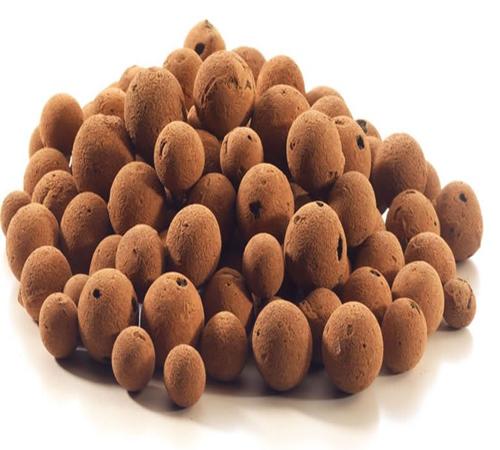
- high thermal conductivity;
- light weight;
- not susceptible to the effects of chemically aggressive environments;
- does not emit toxic substances into the atmosphere;
- it is the only heat-insulating material, when working with which special knowledge, skills and experience are not required.
But this material also has its drawbacks, although there are few of them:
- in order to achieve a high level of heat and sound insulation, you need to lay out the material with a rather thick layer;
- not resistant to moisture, therefore, when insulating damp rooms, a special film for waterproofing should be used;
- rather fragile material, and damage to the granules leads to a decrease in the quality of thermal insulation.
Tools and materials required for roof insulation with expanded clay
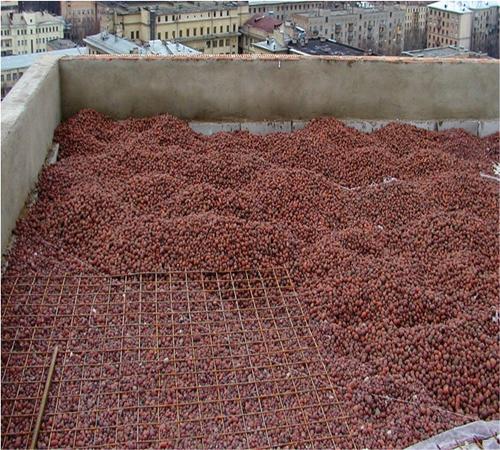

In order to insulate the roof yourself, you will need the following materials and equipment:
- expanded clay on the roof;
- shovel and buckets;
- a log or a stick, in order to tamp the layer of insulation, and a rail to level it;
- waterproofing film;
- roofing material in rolls;
- sharp knife;
- tiles or shingles for outdoor covering.
Steam and waterproofing for expanded clay
Steam and waterproofing of the insulating layer is an important stage in the arrangement of the roof, which in no case should be overlooked. As mentioned earlier, expanded clay is able to absorb moisture. At the same time, its thermal insulation qualities deteriorate sharply, and it itself becomes much heavier than in dry form. This can lead to sad consequences, up to the collapse of the floor. Thus, if the expanded clay layer is allowed to get wet, the service life of the roof can be sharply reduced, and repairs will be required much earlier than planned.
None of the existing types of thermal insulation materials can properly protect the room from the cold, if it itself is not protected by steam and waterproofing. The vapor barrier material is usually installed from the inside of the room, because it protects the insulation from vapors arising inside the room, and the waterproofing is mounted from the outside, because it protects the insulation from moisture coming from the street.
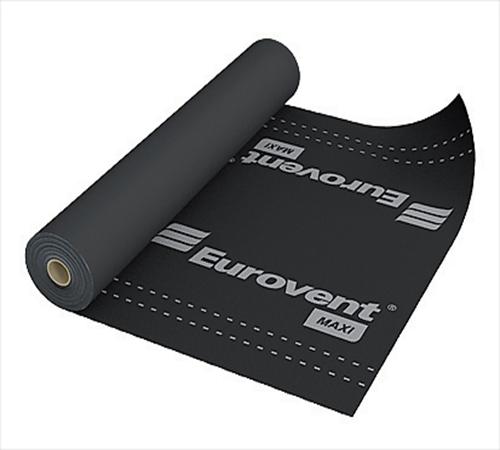

The most common waterproofing materials are films and membranes. Also very often used are materials such as styrofoam, plastic wrap, foil, glassine.
Styrofoam is a type of foam and has excellent vapor barrier properties. Glassine is a bitumen-impregnated roofing board. It is sold in rolls and is very good for waterproofing roofs. Foil and plastic wrap are more often used to protect against condensation, because they do not accumulate liquid.
Roof insulation with expanded clay
Most often, when insulating roofs, builders use the following types of expanded clay:
- expanded clay crushed stone is a large material with granules up to 4 cm in size. Equally good for both roof insulation and floor and wall insulation;
- expanded clay gravel is also coarse-grained material, the granules of which also reach 4 cm in size and have an angular shape;
- expanded clay sand is a finely dispersed material, the particles of which are no more than 5 mm in size. It is used as thermal insulation in which the layer thickness does not exceed 5 cm.


It is quite possible to insulate the roof on your own, if there is no way to pay specialists.
Before starting work, it is necessary to study some features of the warming process. First of all, it is worth paying attention to the design features of the structure, its walls and roof. The insulation process should consist of several stages:
- inner lining;
- vapor barrier;
- laying insulation;
- surface finishing.
Description of work:
- When insulating the roof with expanded clay, the thickness of the material layer should be 25 cm. It is poured directly onto the vapor barrier film in the required amount quickly and accurately to avoid damage to the granules.
- For good heat and sound insulation, it is better to pour a thicker layer, but at the same time it is important not to forget about the maximum load that the roof can withstand. In this matter, it is better to stick to the golden mean.
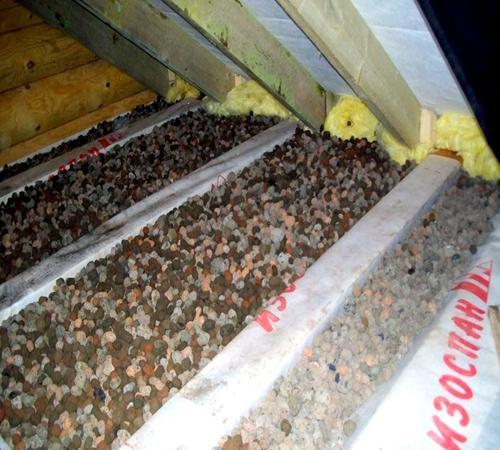

- Then the expanded clay is carefully leveled and compacted so that as few voids as possible remain between its particles. This is done either by hand or using a special machine. It is advisable to make a screed on top of the first layer, to give additional rigidity and strength to the entire structure, as well as to level the surface.
- Also, between the outer inner layers, you should equip several channels through which air will circulate and excess moisture will be removed.
- Next, a roll roofing material is laid directly on the insulating layer, which will press it down with its weight. It should overlap and have no gaps. At the same time, for the tightness of the seams, it is better to isolate them with construction tape or bitumen mastic.
- The next step is to lay tiles or tiles.
Buy expanded clay offer many firms selling building materials, as well as shops and construction hypermarkets.
Roof insulation with expanded clay: technology and features
Necessary tools and materials:
- Vapor barrier;
- Waterproofing;
- Rack used for tamping and leveling;
- Shovel;
- Buckets;
- sharp knife;
- expanded clay.
Before insulation, some preparatory work should be done. They include leveling and cleaning the surface to be covered, as well as filling gaps and cracks. You can read more about roof insulation here.
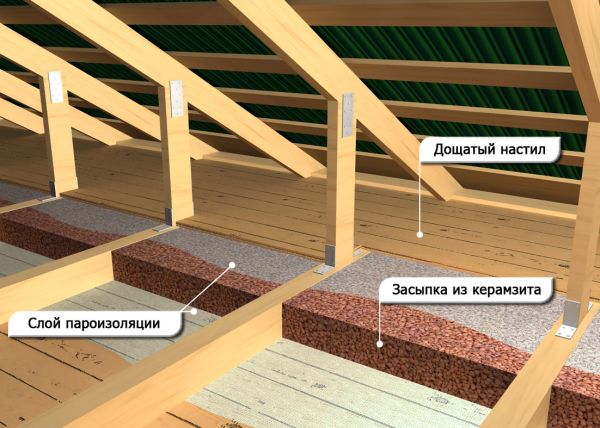

Flat roof roofing pie
If laying is done on metal, should be cleaned from oxidation products, and painted with an anti-corrosion compound.
- First layer vapor barrier is performed on the base. Both membrane and conventional polyethylene films can be used. The use of a vapor barrier with one foil side will provide an additional effect of heat reflection into the room. Any vapor barrier material is laid overlapand also stretches tight. The joints are glued with specialized tape.
- Warming with expanded clay is carried out in strips. To do this, guide rails are attached to the vapor-insulated base with a step of 2-3 meters. The thickness of the expanded clay layer must correspond to the calculated value... A smaller layer will not provide the necessary thermal insulation, and a thicker one can lead to the destruction of the supporting structure to be covered.
- After filling the entire area, it is made alignment and compaction expanded clay layer.
- On top of the expanded clay, a layer of waterproofing is laid or a cement screed is arranged, which improves the strength and rigidity of the structure.
- To assess the quality of the performed thermal insulation work, it is required to warm up the room to a certain temperature, while closing all doors and windows.
- After a couple of hours, check the thermometer before and after. If there is a significant decrease in temperature, then you need to inspect the insulated surface for gaps and crevices.


The lathing of the floor allows you to divide expanded clay into separate cells and serves as logs for the subfloor
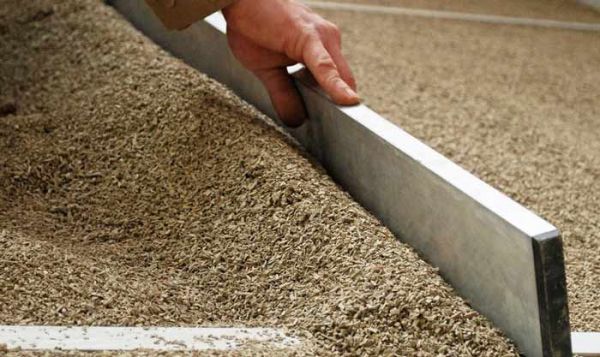

Leveling a layer of expanded clay using a building level
CAUTION!
Laying and compaction of expanded clay must be done very carefully so as not to damage fragile porous elements.
Roof insulation technology with expanded clay
In the instructions on how to properly insulate the roof with expanded clay, there are two sections: insulation of a pitched roof and thermal insulation with expanded clay flat.
Insulation of a pitched roof
Insulation of a one- or two-pitched roof is carried out using the following technology:
- on top of the rafters, a flooring of 20 mm thick edged board or OSB sheets is stuffed. Fastening is done closely, without gaps;
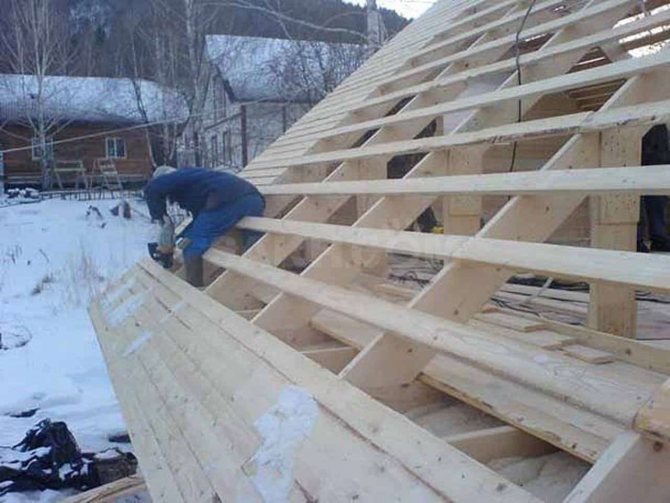

Important: the device of the flooring from the bottom of the rafter system under expanded clay is not practiced because of the very high probability that under the weight of the insulation, the boards will eventually begin to move away. The flooring under the ecowool is mounted below.
- a vapor barrier film is laid vertically over the flooring (10-15 cm). Can be made of simple polyethylene;
- the vapor barrier is attached with a stapler. You should not be too zealous: the main fixation will be carried out with a bar;
- docking seams are glued with tape;
- a bar is attached to the flooring horizontally, using metal corners. The step between the corners is 50 cm, between the beams - 40-60 cm.If the width of the timber is greater than the planned thickness of the backfill, the step can be increased by 10-15 cm.This requirement is explained by the fact that in practice it is impossible to ensure that the backfill surface is parallel to the flooring ... There will always be a small angle. As a result, near the upper beam, the thickness of the expanded clay layer will be slightly less than at the base;
Attention: in almost all recommendations for insulating a pitched roof there is an item on the arrangement of cells between horizontal beams. None of the specialists give a clear explanation, and the personal experience of the site's editorial staff says that the arrangement of the cells is a waste of money.
- expanded clay is poured between the bars, after which it is compacted manually using a board. After compaction, filling and leveling are carried out using a strip or rule. The bars serve as beacons;
- the surface of expanded clay is covered with a windproof membrane (type A or AM). It is not necessary to pull it on in any case, since at low temperatures it decreases in size and can burst in several places. A good example is electrical wires, breaking off in severe frosts is a common thing. The technology for laying vapor barrier membranes can be viewed here;
- a counter-lattice is stuffed with a 40x40 or 50x40 bar on the lined membrane. It has two functions: to create a ventilation gap and become the basis for attaching the finishing roof;
Important: metal tiles and expanded clay do not mix well due to insufficient noise absorption by the latter - in the house during the rain there is a roar, which is difficult to get used to. A soft roof is ideal for ceramic granules, and basalt wool is ideal for metal tiles.
- the roof is covered.
Insulation of a flat roof
Flat roofs from apartment buildings smoothly passed into private construction during the construction of a cottage, summer house, garage. For most builders, insulating them is a new experience, and therefore mistakes are often made.
Here is an approximate scheme of work:
- the base of the flat roof is primed, and twice;
- bituminous mastic is applied over the dried primer. The purpose of such an operation is to create conditions for the adhesion of the roll waterproofing to the concrete floor;
- a waterproofing layer of roll materials (roofing felt, "TechnoNIKOL" and others) is laid with the obligatory approach to the walls along the entire perimeter to the height of the backfill. Vapor barrier films and mastics are not used for waterproofing - there is a high probability of damage by moving expanded clay granules;
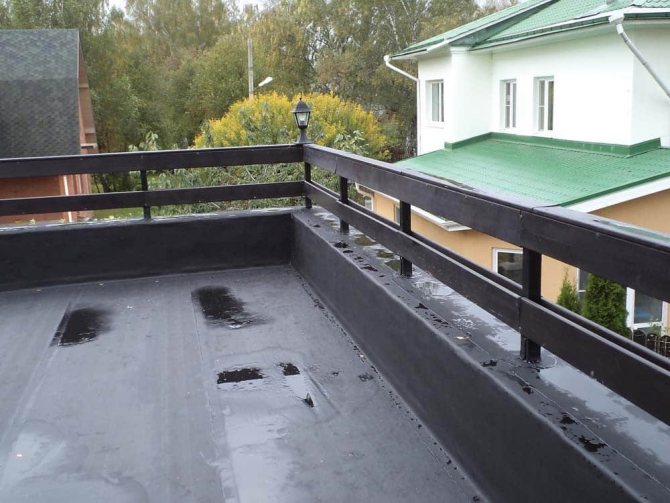

Roof waterproofing before backfilling with expanded clay.
- a layer of ceramic sand with a thickness of 3-5 cm is poured;
- sand is compacted with a board with a handle;
- expanded clay is backfilled with a thickness of 8-12 cm and rammed again. So layer by layer, with constant sealing, they reach the required thickness of insulation.
Further in the technological process, there are several options for completing the work.
1. It is not planned to walk on a flat roof. In this case, a vapor barrier membrane type A or AM is laid over the expanded clay with an overlap. Seams are sealed with tape. Roofing material or any roll waterproofing material is laid on the membrane in two layers, perpendicular to each other. Joint seams are carefully processed with bituminous mastic. Both the film and waterproofing materials must necessarily go onto the wall, above the drain hole. The best option is to close the wall completely, including from above.
Attention: a vapor barrier film is required without fail. Do not forget that expanded clay perfectly absorbs moisture from the air, and roofing material is vapor-permeable. As a result, expanded clay gets wet in heavy fog.
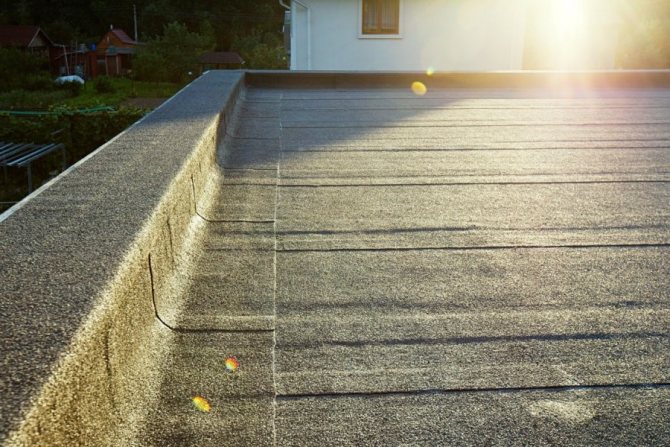

This is how the finishing of the roof with roofing felt looks like.
2. The flat roof is planned to be used as a recreation area. Here, a layer of expanded clay can be poured with a cement-sand screed or covered with sheets of flat slate (you can use OSB or a combination of slate / OSB).
Before pouring the screed, a reinforcing mesh made of metal is laid on the expanded clay, and a damper tape is attached to the wall. Screed layer - 3-5 cm. How to correctly perform this stage of the technological process can be seen in the work "Technology of wet floor screed with expanded clay". The diagram is shown below.


- 1 - flat roof base.
- 2 - wall.
- 3 - waterproofing layer.
- 4 - damper tape.
- 5 - heat-insulating layer.
- 6 - lines of lighthouses.
- 7 - screed from a solution based on sand and cement.
The screed that has gained strength (after 28-30 days) is primed in two layers, and then poured with a bitumen-polymer layer of waterproofing. Finish to the taste of the owner. This can be paving slabs, a layer of fertile soil with grass, porcelain stoneware slabs, etc.
The second option for completing thermal insulation work is simpler and consists of several simple operations:
- from above, expanded clay is spilled with cement milk;
- sheets of OSB or flat slate are superimposed in two layers (plywood is also possible, but it is expensive, but the effect is the same);
- the entire structure is covered with a liquid waterproofing layer of bitumen with polymer additives;
- finishing of the roof is being carried out.
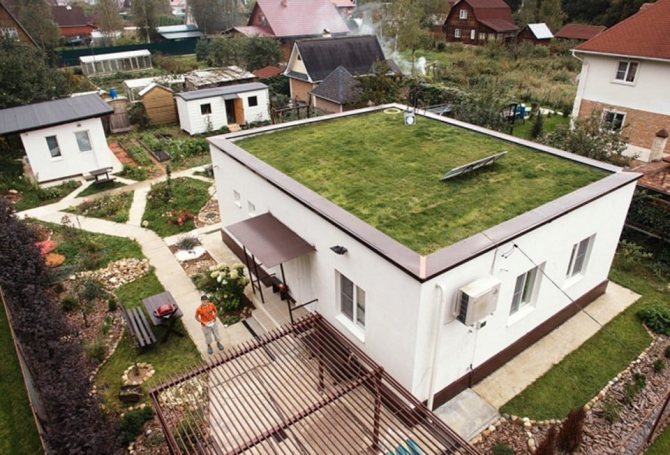

Flat roof: expensive, but nice and functional.
